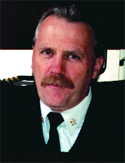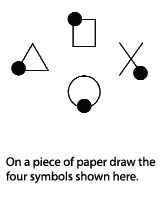
Features
Structural
Training
Trainer’s Corner: A challenging drill that’s fun
I believe that all training officers in the Canadian fire services face the same challenges. There is no evidence to the contrary, for whether they are full time or paid-on-call the challenge to effectively train fire fighters is at times overwhelming. Our family has a deep-rooted respect for all whose goal it is to ensure fire fighters go home safely after each call.
December 6, 2007
By Ed Brouwer
 I believe
I believe
that all training officers in the Canadian fire services face the same
challenges. There is no evidence to the contrary, for whether they are
full time or paid-on-call the challenge to effectively train fire
fighters is at times overwhelming. Our family has a deep-rooted respect
for all whose goal it is to ensure fire fighters go home safely after
each call. This month's article will revisit a training drill that is
simple to set up, yet challenging enough to keep your members
interested. It has proven to be a favourite at our training sessions.
Communications drill
Time required: About 15 minutes per team
Objective: Sharpen radio communication skills and encourage the "thinking" process
Items needed: Duct tape, stop watch, two portable radios, four traffic cones
Beforehand preparation:
On a piece of paper draw the four symbols you see below (triangle,
square, circle and X). If you have access to a photocopier make a
number of copies. On one sheet (trainer's copy) use a coloured marker
and put one dot (representing a traffic cone) somewhere touching one of
the symbols. Do this for each symbol. (See the diagram below.) Now,
somwhere on the floor of a room or a bay use duct tape to outline the
four symbols in the same pattern as per your drawing. The symbols
should be no smaller than 24 inches by 24 inches in size. Stack the
four traffic cones somewhere close by.
It is imperative that no one sees your setup.
 Procedure:
Procedure:
To begin your drill, divide the members up into teams. A team must have
an IC and several members who will be the entry team. Size and number
of teams will be dependent upon your turnout.
Take one team's
IC aside and give him/her a radio, a blank piece of paper and a pen. It
is important that he/she does not see the area where there is duct tape
or your schematic of the layout. The IC must not be able to see the
entry team as he/she is pretending to be outside the building.
Place
your entry team in the room or bay where you have the duct-taped
symbols. Give them a radio and inform them that they are entry team #1.
Tell them that they are to imagine themselves disoriented inside the
building and all that they can really see is the floor area with the
symbols. DO NOT orient them in any other way. Let them work this out.
Tell them to use their radio to inform the IC of their predicament.
Encourage them to think they may well succumb to the fire if they are not rescued soon.
Both
the entry team and the IC must pretend not to know the building layout.
They cannot see doors, windows or stairways. The idea is to get the IC
to ask the right questions via the radio in order to draw out
information as to the pattern which the entry team sees on the floor.
There must be NO VISUAL contact between the IC and the entry team. You
should be checking to see what the IC is drawing on his/her blank sheet
as he/she recieves radio information from entry team #1.
Once
you feel the pattern is close, give him/her your copy of the pattern
showing the traffic cones. On another copy of the floor plan record the
names of the team members. Inform the IC that the traffic cones must be
placed on the duct tape symbols in accordance with the drawing you have
given him/her. This is a combination, if you will, that will open the
door to rescue the entry team. Start the timer or note the start time.
Once the entry team and the IC are satisfied with the placement of all
four cones, record the time and stop the drill. Have the IC bring his
floor plan to the entry team's location and check the positioning.
Overview
Let
each team discover what method works for them. This drill is more
effective when you get them to "think." We have witnessed numerous
methods that DO NOT work. Using "clock" positions, for example, or
"north" and "south," and even "left" and "right" do not work
effectively. It is pretty hard to know where north is if you are in a
dark windowless basement. Do some brainstorming. Then share with them
that the most effective method is to first establish a point of
reference. Example: "I am facing a triangle with a square to my left
and a circle to my right." Once that is clear you can establish the
triangle as "Alpha," which would make the square "Bravo," the X
"Charlie" and the circle "Delta."
This method then can be
assigned to each symbol. This would then sound something like; "Place
the traffic cone on the "Alpha Bravo" corner. Believe me, that is a
whole lot easier than "east of the square."
If you have time to
do the drill again this time using the "Alpha Bravo" method, record
your times. No doubt you will see a vast improvement. And in our
business time is life!
This drill has the two major elements
of a good practice – challenge and fun. You can mix it up by giving
them an alotted time to complete it, or by using full turn-out gear
including BA. You could even make it a competition.
Before I
close, I would like to congratulate my son Aaron (contributor for
Canadian Firefighter and EMS Quarterly). Thirty-eight fire department
applications, 15 exams, seven interviews, $8,000 spent. A full-time
fire fighter position with the Prince George fire department:
PRICELESS. With that kind of determination I know he will do well at
whatever he sets his mind to. Congrats Aaron. To all you young fire
fighters dreaming of a full-time position, keep the dream alive, it
could be around the next corner.
As for the rest of us, lets remember to stay safe and train like their lives depend on it, because they do.
Ed Brouwer is the Fire Chief/Training Officer for Canwest Fire and a
member of the Osoyoos (B.C.) Fire Dept. The 18-year veteran fire
fighter is also a Fire Warden with Ministry of Forests, a First
Responder III instructor/evaluator, Local Assistant to the Fire
Commissioner and a fire service motivational speaker and chaplain.
E-mail ed@thefire.ca .
Print this page